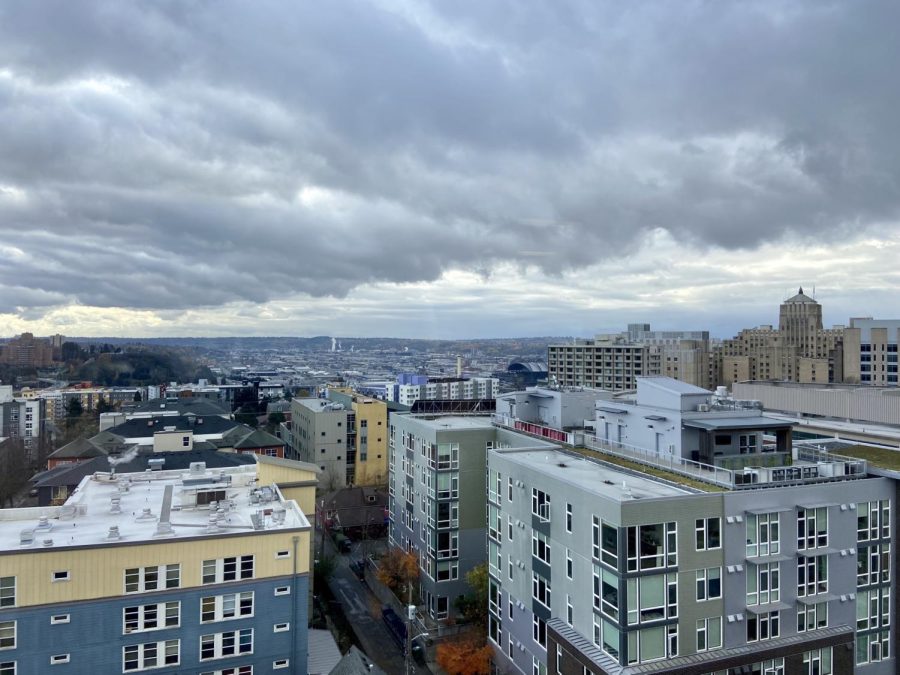The Prevalence of Seasonal Depression and Helpful Resources
With Thanksgiving travel, impending finals and the stress of holidays increasing, it’s a busy time for the Seattle University community. Simultaneously, a seasonal shift marked by time change, earlier sunsets and days where it rains more than shines has begun.
For some, the loss of sunlight results in developing Seasonal Affective Disorder, or SAD. SAD requires an official diagnosis—and if one is experiencing symptoms, it is recommended that they speak to a doctor.
According to Psychiatric Mental Health Nurse Practitioner Kristine Highlander, seasonal depression is a type of major depressive disorder which likely stems from a combination of factors related to the change in weather. It typically occurs during the transition between fall and winter.
Highlander elaborates on experiences students can recognize when affected by seasonal depression, which may be triggered by the shift to Standard Time and exposure to less sunlight in the colder months.
“We may not feel safe doing our favorite outdoor activities during the evening hours due to darkness, or feel a lack of motivation at least in part due to rain or cold,” Highlander wrote in a statement to The Spectator. “It is normal to take a couple weeks to get into new patterns for exercise or hanging out with friends or studying.”
Director of Wellness and Health Promotion, Chris Fiorello, identifies an important question for students to be asking themselves: what does it mean to be healthy?
“We often function on the model of presence or absence of an illness as being the indicator of wellness,” Fiorello said. “I don’t look at it like that. You can have Parkinson’s and live a very full and well life. You can have diabetes and live a very full and healthy life. But we need to apply that mental health, and recognize that our metrics shouldn’t be whether you have the thing; it should be whether you’re flourishing or languishing in that experience because it will always be work … The question is, are we flourishing in the experiences that we have or are we languishing in those experiences?”
If students find themselves struggling with seasonal depression, there are an abundance of resources available. For instance, Wellness and Health Promotion distributes light lamps that mimic outdoor light and help trigger a person’s natural circadian rhythm.
The Program Coordinator for Mental Health at Wellness and Health Promotion, Renata Elias Loyola, shares how students can be a part of the light lamp program, which has expanded since it started last year.
“Students get [the light lamps] for 30 days,” Loyola said. “We created a pre-test and a post-test survey to see the effectiveness of it. [This year] while they have the lamps, we send an email to them with different information about [the] lamp, how it works, what it looks for and how to use it. All the lamps come with a tips and tricks sheet that has information about how many times a day you need to use it, how long you need to use it for, what time is better—all that information needed for each [of four weeks]. We highlight the most important things about the lamps and seasonal depression.”
The Student Health Center is another resource. There, Primary Care Advanced Registered Nurse Practitioners (ARNPs) can screen students for physical and psychiatric illness and initiate the indicated treatments. They also can refer students to Seattle U’s Counseling and Psychological Services (CAPS).
Seasonal depression affects the mental and physical health of the individual, which makes it critical to address both. Highlander and Fiorello shared their advice about things students can do on their own to practice good physical and mental health habits.
“It can be helpful to put extra emphasis on routines and doing healthy things you enjoy during this season[al] transition,” Highlander wrote. “It is important to maintain a consistent sleep schedule. You could move your outdoor exercise to an earlier time or look for [an] indoor exercise opportunity.”
“Journaling is a wonderful technique, mindfulness and meditation, yoga … art-therapy and gardening-therapy,” Fiorello said. “All of those things can be wonderful ways of supporting our mental health.”
As finals and the end of the quarter approaches, it is important for students to take care of themselves by setting small goals and celebrating little victories.
On the Seattle U campus, the Wellness and Health Promotion office, Counseling and Psychological Services and Student Health Center are all resources for students in need. Do not hesitate to reach out.
Other resources include King County’s Crisis Connections (206-461-3222 or 866-427-4747) or Crisis Text Line (text “Home” to 741741).


